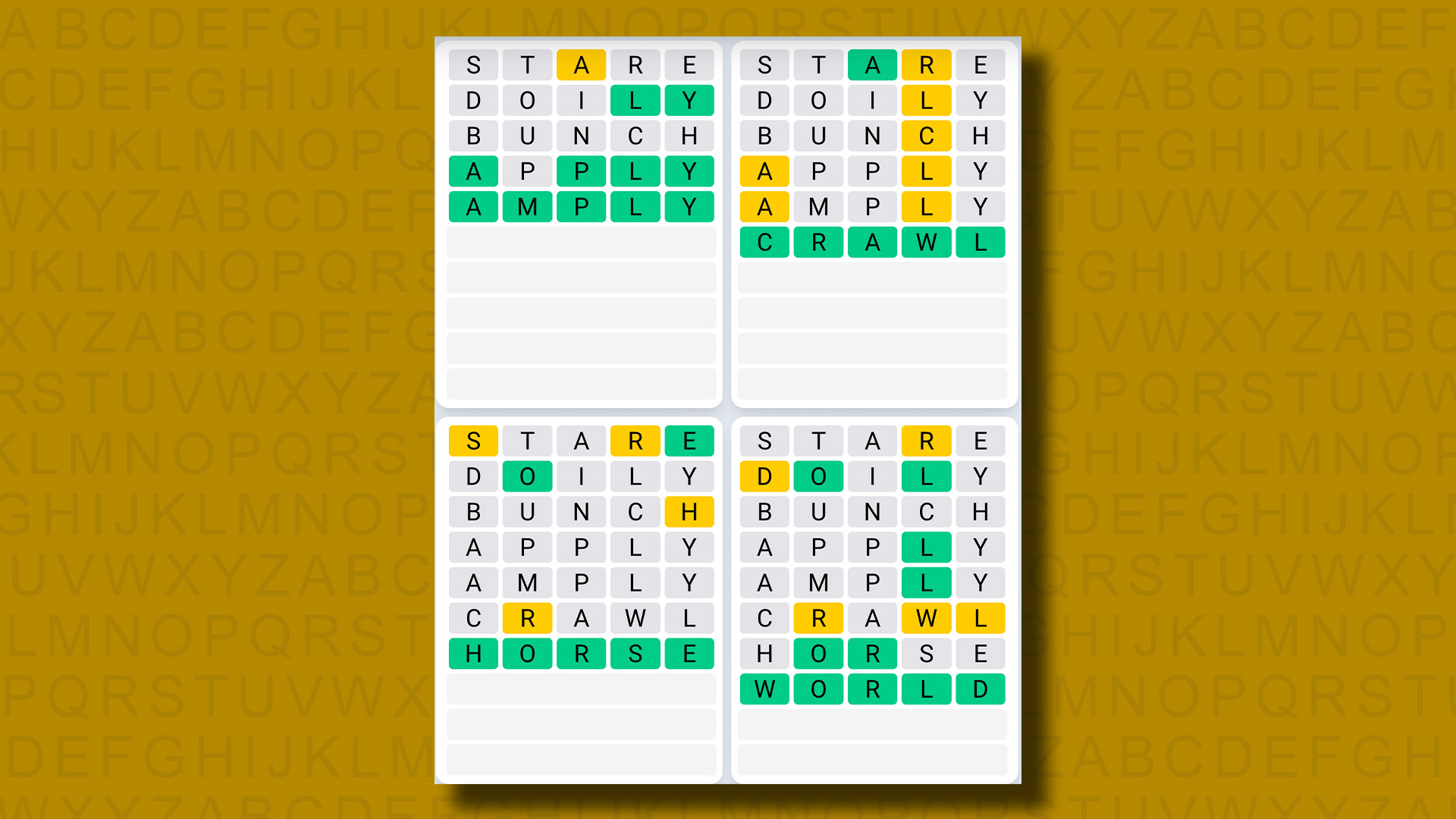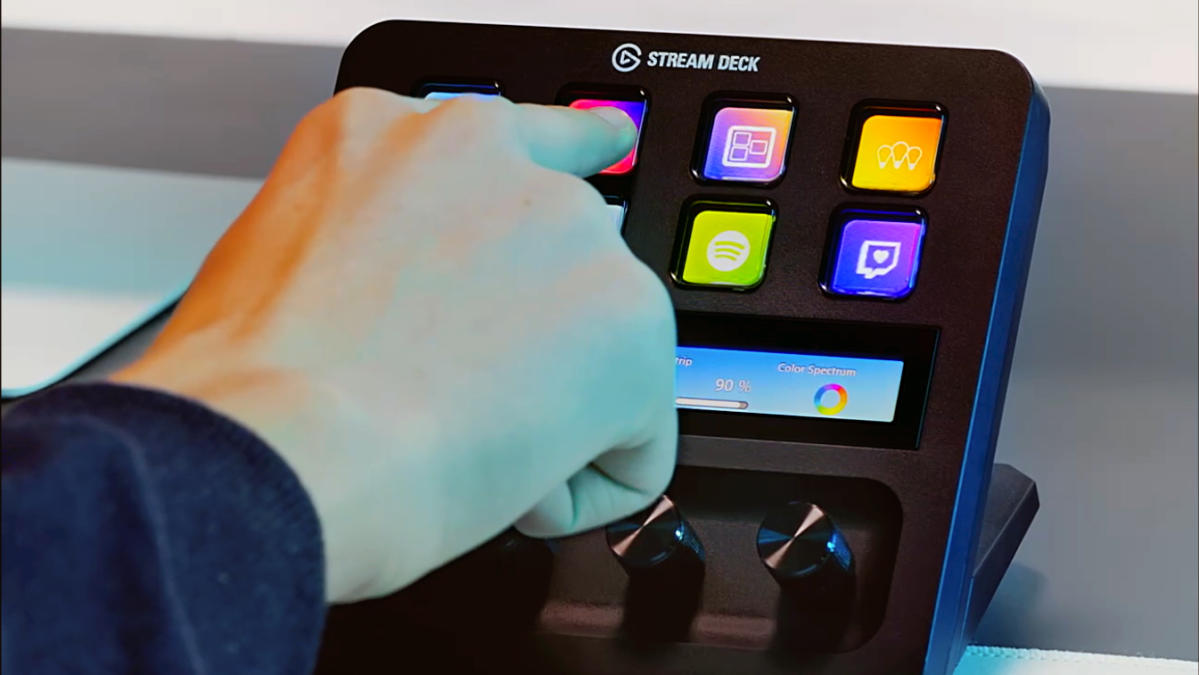Quordle was one of the original Wordle alternatives and is still going strong now nearly 1,000 games later. It offers a genuine challenge, though, so read on if you need some Quordle hints today – or scroll down further for the answers.
Enjoy playing word games? You can also check out my Wordle today, NYT Connections today and NYT Strands today pages for hints and answers for those puzzles.
SPOILER WARNING: Information about Quordle today is below, so don’t read on if you don’t want to know the answers.

Quordle today (game #973) – hint #1 – Vowels
How many different vowels are in Quordle today?
• The number of different vowels in Quordle today is 4*.
* Note that by vowel we mean the five standard vowels (A, E, I, O, U), not Y (which is sometimes counted as a vowel too).
Quordle today (game #973) – hint #2 – repeated letters
Do any of today’s Quordle answers contain repeated letters?
• The number of Quordle answers containing a repeated letter today is 1.
Quordle today (game #973) – hint #3 – uncommon letters
Do the letters Q, Z, X or J appear in Quordle today?
• Yes. One of Q, Z, X or J appears among today’s Quordle answers.
Quordle today (game #973) – hint #4 – starting letters (1)
Do any of today’s Quordle puzzles start with the same letter?
• The number of today’s Quordle answers starting with the same letter is 0.
If you just want to know the answers at this stage, simply scroll down. If you’re not ready yet then here’s one more clue to make things a lot easier:
Quordle today (game #973) – hint #5 – starting letters (2)
What letters do today’s Quordle answers start with?
• G
• S
• A
• F
Right, the answers are below, so DO NOT SCROLL ANY FURTHER IF YOU DON’T WANT TO SEE THEM.
Quordle today (game #973) – the answers

The answers to today’s Quordle, game #973, are…
For the second day in a row my Quordle game nearly fell foul of an uncommon letter. Today it was X that tripped me, with ANNEX staying frustratingly out of reach of my brain until the last possible minute, when I’d tried (I think) every other possible letter combination left to me at that point. The double N in the word didn’t help either, and nor did the inclusion of GUILT elsewhere; the fact that BUILT also fit meant I had to use up another narrowing-down word to find the correct one.
How did you do today? Send me an email and let me know.
Daily Sequence today (game #973) – the answers

The answers to today’s Quordle Daily Sequence, game #973, are…
Quordle answers: The past 20
- Quordle #972, Sunday 22 September: ZESTY, MEATY, ALIVE, DRAWN
- Quordle #971, Saturday 21 September: VITAL, FRAIL, SPEAR, EERIE
- Quordle #970, Friday 20 September: ELIDE, DITTO, SHAWL, BONUS
- Quordle #969, Thursday 19 September: MARRY, OWING, DICEY, LUCKY
- Quordle #968, Wednesday 18 September: CEDAR, VENOM, MIGHT, MEDIC
- Quordle #967, Tuesday 17 September: ETHOS, COUNT, PRINT, THREE
- Quordle #966, Monday 16 September: ROUGE, SWAMP, FUGUE, UNDUE
- Quordle #965, Sunday 15 September: VILLA, SMOKE, BULKY, THRUM
- Quordle #964, Saturday 14 September: ESSAY, GENRE, WIMPY, CHUTE
- Quordle #963, Friday 13 September: LEANT, ORGAN, FILLY, PLAIT
- Quordle #962, Thursday 12 September: ARBOR, STARK, LEAVE, GOOFY
- Quordle #961, Wednesday 11 September: ROUGH, CACTI, SAVOY, ODDER
- Quordle #960, Tuesday 10 September: PLUMB, SEIZE, EARLY, ASSET
- Quordle #959, Monday 9 September: CHIRP, BEADY, THETA, MINUS
- Quordle #958, Sunday 8 September: TEASE, AGATE, PRIDE, PLATE
- Quordle #957, Saturday 7 September: LASSO, TILDE, BUNCH, PRONG
- Quordle #956, Friday 6 September: FARCE, WOOLY, LOCAL, NIGHT
- Quordle #955, Thursday 5 September: SNIDE, EGRET, AMONG, SHINY
- Quordle #954, Wednesday 4 September: POINT, WITTY, GAFFE, ABUSE
- Quordle #953, Tuesday 3 September: ATOLL, ANGER, OCEAN, SWEEP





































































































































You must be logged in to post a comment Login